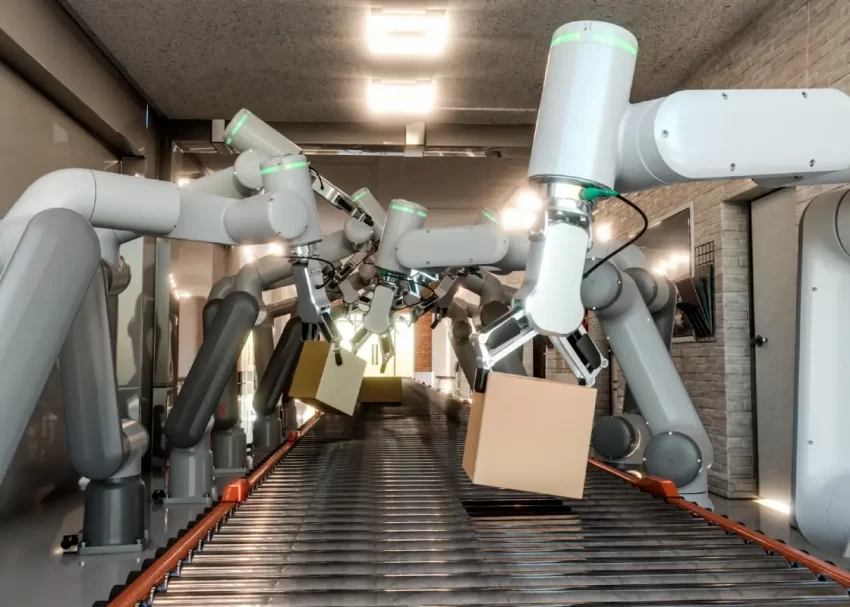Automation in manufacturing is a technological revolution that transforms analog production lines into intricate networks of machines. Factors driving this evolution include global competition, consumer demands, and complex product designs.
Today’s factories utilize robotics, machine vision, and data analytics to drive operational improvements. This technology benefits manufacturers managing sensitive materials and sanitation, including those in the food and beverage and municipal utilities sectors. High-quality operations often rely on advanced water system maintenance products to protect equipment and ensure ongoing regulatory compliance.
These products, combined with robotics and smart sensors, enable companies to automate manual checks, minimize errors, and maintain clean systems around the clock. Thoughtful automation not only modernizes the manufacturing process but also ensures a safer, more consistent product for end users.
Core Benefits of Automated Production
Automation offers numerous benefits to both large corporations and local operations, including increased efficiency and productivity. Machines can operate 24/7 without human fatigue, allowing lines to run 24/7. This is particularly beneficial for companies with international orders or seasonal demand surges, as it maximizes throughput and helps meet market needs.
- Productivity Gains: With programmable automation, manufacturers can ramp up output while maintaining consistency, giving them a competitive edge. The flexibility to quickly switch between products helps smaller companies cater to unique clients or niche markets.
- Consistency and Quality: Automation ensures the smallest components are always placed, welded, measured, or inspected the same way, every time. Sophisticated vision systems and real-time quality checks detect minor defects early, reducing costly recalls and enhancing overall customer satisfaction.
Research from the U.S. Bureau of Labor Statistics indicates that labor productivity in manufacturing consistently exceeds that of other economic sectors, largely due to the ongoing adoption of automated systems. These efficiency gains in productivity and quality build more resilient businesses in an unpredictable economy.
The Human Side: Workforce Trends and Training
Automation is not replacing people; rather, it is increasing the demand for skilled labor. Today’s manufacturing professionals are as experienced in programming code as they are in operating a mechanical press. Many plants have dedicated teams of technicians, programmers, and analysts to ensure seamless equipment operation and innovative improvements.
Upskilling is becoming the industry norm, with technical schools, vocational programs, and in-house training courses preparing employees to work alongside sophisticated automation. As human roles evolve, teams become more dynamic and versatile, enabling them to adapt faster to product changes or new market demands. Employers utilize their workers’ firsthand knowledge to inform the implementation of automation and enhance outcomes.
Automation and Sustainable Manufacturing
Sustainability is a major concern in manufacturing, and automation is a key solution. Automated systems optimize material usage, increase recycling rates, and reduce waste. Smart sensors monitor energy consumption, adjusting operations to conserve resources and minimize emissions. Automated defect detection prevents flawed products from reaching the next stage, saving materials.
Adaptive control systems recycle water, regulate batch sizes, and minimize process variability, leading to savings on utilities and raw materials. Automation’s ability to reduce environmental impact is a key competitive advantage, enabling companies to meet consumer expectations and comply with environmental regulations. Building efficient, eco-friendly production lines future-proofs operations and supports a healthier planet.
Key Barriers to Adopting Automation
Despite the attractive outlook, the widespread adoption of automation still encounters several barriers. Initial costs for industrial robotics, controls, and integration can be significant, especially for small and mid-sized businesses. Financing these projects often requires a strong business case and a willingness to balance short-term expenses against long-term gains.
- High Introduction Costs: Equipment, installation, software, and ongoing maintenance require up-front investment, and the expected payoff may be months or years away.
- Compatibility Issues: Many plants have legacy machinery that wasn’t built to connect to today’s smart systems. Retrofitting or interfacing new automation sometimes requires custom engineering or staged implementation plans.
- Workforce Gaps: Successful adoption hinges on finding (or cultivating) staff skilled in robotics programming, troubleshooting, and systems design. The labor market continues to struggle with a shortage of qualified candidates, prompting employers to intensify their efforts in training and retention.

